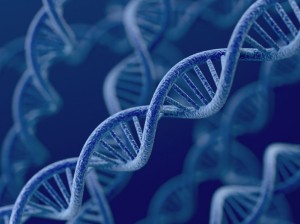Ahead of the Curve: What You Need to Know about CRISPR

Dr. Emmanuelle Charpentier (photo by Bianca Fioretti, Hallbauer & Fioretti) and Dr. Jennifer Doudna (photo by Duncan Hall, the Royal Society)
October 8, 2020 — Yesterday the Royal Swedish Academy of Sciences announced the 2020 Nobel Prize in Chemistry was awarded jointly to Dr. Emmanuelle Charpentier and Dr. Jennifer A. Doudna “for the development of a method for genome editing” through CRISPR/Cas9 genetic scissors.
“There is enormous power in this genetic tool, which affects us all,” said the chair of the Nobel Committee for Chemistry. “It has not only revolutionised basic science, but also resulted in innovative crops and will lead to ground-breaking new medical treatments.”
This marks the first time the Nobel Prize for Chemistry has been awarded jointly to two women, and Drs. Charpentier and Doudna are only the sixth and seventh women in history to win the chemistry prize.
To mark this historic occasion, we revisit Luis Granados’ 2018 analysis of CRISPR exploring the profound implications for the future of gene-editing technology.
 There are some things that are interesting and/or useful to learn about. The causes of the Korean War, Post-Impressionism, how to make a soufflé. There are other things that you really must learn about if you are to be a responsible humanist. Things that fundamentally affect our future as a species fall into this category. Things like CRISPR.
There are some things that are interesting and/or useful to learn about. The causes of the Korean War, Post-Impressionism, how to make a soufflé. There are other things that you really must learn about if you are to be a responsible humanist. Things that fundamentally affect our future as a species fall into this category. Things like CRISPR.
What is CRISPR?
CRISPR is an acronym for “Clustered Regularly Interspaced Palindromic Repeats.” It’s a technique for steering an enzyme, called Cas-9, to a targeted location in the immensely long double helix of DNA. Once there Cas-9 does its thing, which is to snip out a segment of that DNA. The two separated strands then join back together. Or, in a more advanced form, the steering piece (a slice of RNA) can carry with it a replacement segment, which is carefully installed in the proper spot. Some recent research suggests it may be possible to avoid the “snipping” part, and simply use the RNA steering mechanism (aka “biology’s search engine”) to turn particular genes on or off.
What makes CRISPR so special?
It’s easy and it’s CHEAP! And it works. DNA, the master code for life, can now be edited almost as easily as this article can be edited. It may not be exaggeration to call CRISPR, as Forbes magazine did last December, “The Next Step in Human Evolution.”
What’s the upside?
The days of any number of diseases may be numbered: sickle-cell anemia, muscular dystrophy, cystic fibrosis, diabetes… In agriculture, CRISPR is a vastly more precise (and cheaper) technique for tailoring better (or at least different) animals and plants than “traditional” GMO. (It’s already being used to make a better-tasting beer.) A short step beyond that, CRISPR may also be used to enhance human capabilities, exterminate disease-bearing species like mosquitos, or bring extinct species like the woolly mammoth back to life.
What’s the downside?
Some people, like me, are a little nervous about the “enhance human capabilities” part. And the unknowable side effects on finely tuned ecological systems. So is Jennifer Doudna, the person most responsible for developing CRISPR in the first place. Like Robert Oppenheimer, the “Father of the Atomic Bomb” who strove to restrict its use, Doudna is raising big red warning flags about going too far, too fast with CRISPR. Example: removing a gene called PSK9 can significantly reduce cardiovascular disease—but it’s also been shown to increase the risk for diabetes.
Can CRISPR make plants and animals that glow in the dark?
Yes. Also, animals with three fully functional eyes.
Does CRISPR really work as well as advertised?
It seems to. There was a kerfuffle last year when researchers reported a suspicion that the Cas-9 was making some random cuts along with the intended ones, but the scientific method has worked its magic and those researchers now admit they were wrong. Moreover, even though the technique has only been around since 2012, the pace at which it’s taking hold is breathtaking. A recent article suggests the CRISPR technique could be used to edit thousands of genes at once, and another CRISPR breakthrough has allowed researchers to turn skin cells into stem cells.
How permanent are the genetic changes?
That’s a critical question. Some types of changes affect only the organism treated. Others affect the “germline,” so that offspring have at least a 50-50 chance of inheriting the change. This makes a huge difference. If a mutation with unforeseen side effects (or for that matter, intentional harm created by a terrorist) gets loose in the ecosystem, it may be extremely difficult to contain.
Something this powerful and dangerous is kept carefully under wraps, right?
Wrong. Just the opposite. You can buy a do-it-yourself CRISPR kit for about $150 and start fooling around with genes in all kinds of organisms to your heart’s content. Last year an foolish exhibitionist injected himself with a CRISPR dose designed to make him more muscular and streamed it live on Facebook. There isn’t much reason yet to believe his effort was successful, but of course he’s spawning copycats. In the agricultural sector, the US Department of Agriculture just announced it’s not going to regulate CRISPR-modified food at all.
Will CRISPR only be available to the rich?
Kits for experimenting with CRISPR are cheap, but a full-blown program to accomplish a desired goal without causing negative side effects is likely to be quite expensive. We have a terribly hard time paying for medical care as it is—a rush of expensive new enhancement options will ratchet up pressure on a system that’s already broken. My guess is that, yes, many CRISPR options will only be available to the rich. Some people say that’s a problem.
Should government do more to crack down on this?
In Canada, editing genes that can be passed down to future generations is a criminal offense with a maximum penalty of ten years in jail. But that won’t solve the problem by any means. China isn’t cracking down on anything, and is racing ahead with experiments on humans. And no one has any idea what folks are creating with the do-it-yourself CRISPR kits. The regulation of CRISPR would seem to be an urgent topic for an international treaty, but I’m not aware of any movement toward that end.
What can you do?
Learn as much as you can. The links in this article are a good start. Then, start bugging politicians about what they’re doing about it. This is too big just to keep our fingers crossed and hope everything turns out OK.
